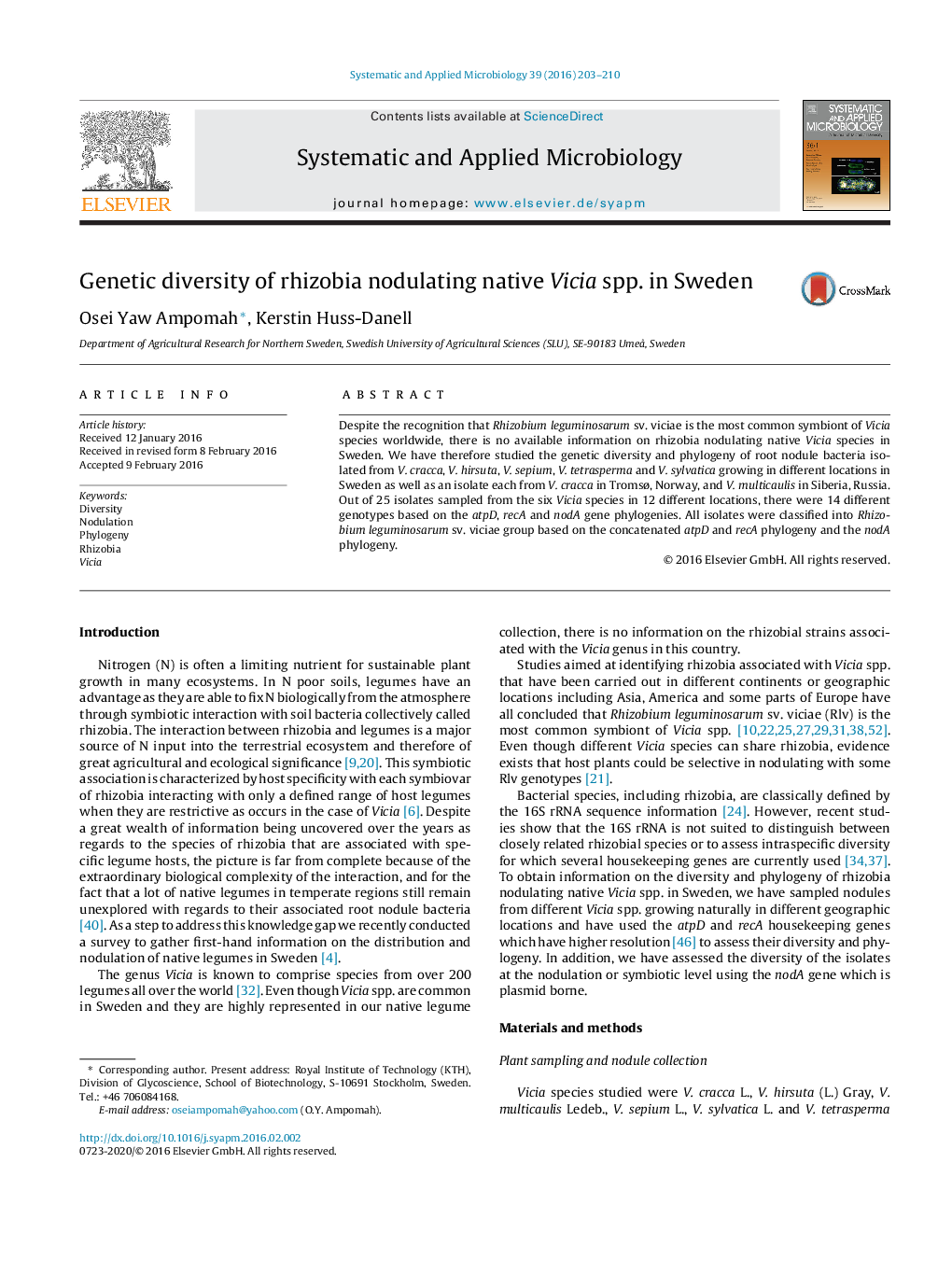| Article ID | Journal | Published Year | Pages | File Type |
|---|---|---|---|---|
| 2062937 | Systematic and Applied Microbiology | 2016 | 8 Pages |
Despite the recognition that Rhizobium leguminosarum sv. viciae is the most common symbiont of Vicia species worldwide, there is no available information on rhizobia nodulating native Vicia species in Sweden. We have therefore studied the genetic diversity and phylogeny of root nodule bacteria isolated from V. cracca, V. hirsuta, V. sepium, V. tetrasperma and V. sylvatica growing in different locations in Sweden as well as an isolate each from V. cracca in Tromsø, Norway, and V. multicaulis in Siberia, Russia. Out of 25 isolates sampled from the six Vicia species in 12 different locations, there were 14 different genotypes based on the atpD, recA and nodA gene phylogenies. All isolates were classified into Rhizobium leguminosarum sv. viciae group based on the concatenated atpD and recA phylogeny and the nodA phylogeny.
